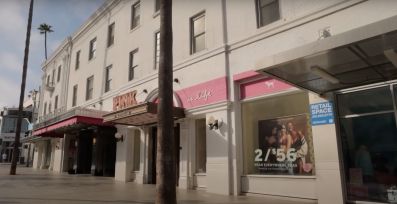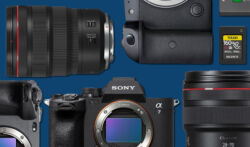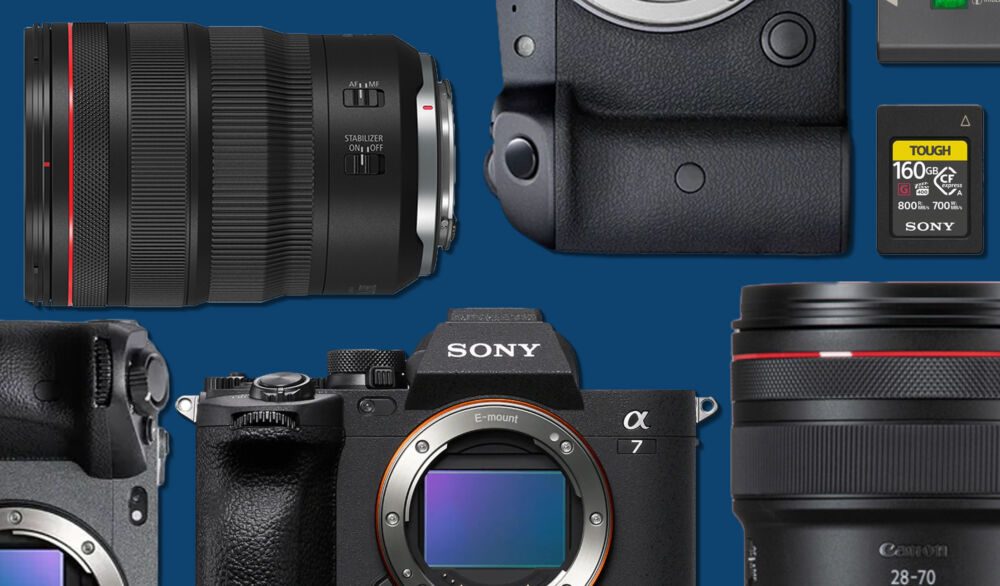
(Click here to view a larger version!)
The Equipment and Settings
- Nikon D5300
- Tokina 11-16mm f/2.8 @ 11mm
- FotoPro C5C Tripod
- Generic cable release / intervalometer
- 15 min exposure @ f/2.8 & ISO 1600
- Manual Exposure, Manual WB, RAW
How We Shot It
Continuing with the recent “How We Shot It” theme of long exposures, today we have something quite different from last week’s 30 sec. sunset tide pool portrait. While shooting in broad daylight for 30 seconds or longer is a challenge because it requires a very dark neutral density filter such as a 9-stop or 10-stop ND, shooting on a moonless night at the bottom of the Grand Canyon is even darker!
Packing Light – Backpacking With A DSLR
Prior to going on this recent adventure, I had seen just a handful of night exposures of Havasupai Falls and I was really excited to create some images here. Since it was a 12 mile backpacking trip down into the Grand Canyon, I decided to pack as lightweight as I possibly could. This meant that my camera of choice was the ultra-light Nikon D5300, a mere beginner DSLR by most accounts. However, I had already performed extensive testing with the D5300’s sensor, and I was quite confident in its image quality even at high ISO’s for night photography. (Click here to check out our D5300 review and sample images) The D5300 also shares a sensor similar to that of the Nikon D7100, for the record, and you can read our full review of that camera here.
Usually when I want to create a star trail, I use a stacking technique to combine 30 sec. or 60 sec. exposures. I do this because creating a single 15-30 minute exposure will generate a lot of noise in an image, even with the latest and greatest DSLR sensors. To learn more about the stacking technique, watch this video here.
What you don’t always think about is, …what if it’s SO DARK that even a ~60 sec. exposure isn’t bright enough? You can usually get good images at night if there is just a tiny bit of moonlight in the sky, however if the moon is not shining at all, then you are in trouble! Even an f/2.8 lens and clean ISO 3200 may not save you.
Metering Night Photography
So, how do you gauge a correct exposure in the pitch-black of a moonless landscape? Let’s rewind all the way back to January of last year, to this video in which I explain how I captured a 15-minute long “selfie” in Joshua Tree National Park. Basically, the trick is to use your absolute highest ISO and your fastest aperture, and just start guessing at shutter speeds based on your own personal knowledge. (Unless you’re shooting by the light of a full moon, you really cannot trust any light meter, even the fancy external ones!)
For this particular scene, I went to ISO 25600 on my Nikon D5300, and f/2.8 on my Tokina 11-16mm f/2.8. I tried a 30 sec. exposure and it turned out to be about one stop too dark. So I knew that 1 min at ISO 25600 would be a good exposure. But of course ISO 25600 is a complete joke on a crop-sensor camera, so I needed to re-calculate the same exposure with different settings. This is when I start counting stops of light on my fingers. (There are a few handy-dandy apps you can download on your phone to do this, but I like to tease my brain with the old-fashioned method!)
Going back down from ISO 25600 to ISO 1600 is four stops. That means I have to raise my shutter speed by four stops, starting at 1 min. 1 -> 2 -> 4 -> 8 -> 15 mins, …voila! that’s how I picked my exposure.
How To Take a 15 Minute Exposure
To achieve a 15 minute exposure, you have a few options. You can generally use “bulb” mode, of course, which is either a dedicated exposure mode (Canon and Pentax and others) …or just the next shutter speed past 30 sec. (Nikon and others) There are so many different options I’ll have to save them for a separate tutorial, however for this exposure I just programmed in a 15 min. exposure with a generic external cable release / intervalometer.
My first exposure wasn’t satisfactory, though, because my adventure buddies and I were playing around with using headlamps to illuminate the landscape and it didn’t look quite right. At least I knew I had nailed my exposure!

I decided to create another exposure in complete darkness. I knew that the shadowy areas might get a little “mushy” in such a long exposure at such a high ISO, but I was hoping that I could make it all work in post-production.
The Post-Processing
 Un-Edited Image in Lightroom 5 / Camera Raw CC
Un-Edited Image in Lightroom 5 / Camera Raw CC
Because the moon was actually about to rise over the horizon, this image came very close to clipping the highlights. Also, the shadows were definitely quite murky as I had feared.
Thankfully, the highlights were able to just barely hold on when I used the SLR Lounge preset “HDR Max” in the Vivid Base category.

Since this preset cranks both shadows and blacks all the way to +100, it also does me the favor of adding +20 noise reduction as well. I would usually go a little higher, but unfortunately, the D5300’s shadows were already falling a part a little too much, so I decided to just leave the “grain” alone. Still, the HDR preset was flattening the image a little too much, so I fine-tuned a few of the basic settings a little bit, and dialed the blacks all the way down from +100 to -20. This gave me a much more pleasing range of contrast, while still managing the dynamic range in a way that I liked.



Do I wish I had brought a different camera, like a Nikon D800 or a Nikon D600, for this particular exposure? Maybe, but to be honest, I’m quite impressed by how well the camera performed. Considering that viewing a 24 megapixel image at 100% is like viewing an ~80″ print from very closely, I’m confident that this will make a great 20-30″ print.
From here all the image needed was a little bit of burning and dodging. Usually what I do is instead of using the ordinary burn & dodge brushes, I take one of the brush presets in the SLR Lounge Preset System and modify it a little bit. For example, we have a “Sky Cloud Ocean” preset that I often tweak into a burning or dodging preset by adjusting either the exposure, to make it a dodging (brightening) brush, and/or the highlights, to make it a burning (darkening) brush.

At this point, I felt I was happy with the image overall. Of course, if I were going to print and display it, I might spend an hour or two with minor burning and dodging, but as it is the image stands on it’s own for now.
If you have any questions about creating long exposures such as this, feel free to ask away!
Take care, and happy clicking,
=Matthew Saville=
The SLR Lounge Preset System
The SLR Lounge Preset System is designed to enable Lightroom users to achieve virtually any look and effect within 3-5 simple clicks. From basic color correction, vintage fades, black & white effects, tilt-shift effects, faux HDR, retouching, detail enhancing, and so much more. The sky is the limit with what has been dubbed the most powerful and intuitive preset system available. Click the link above to learn more/purchase! The SLR Lounge Preset System is now available for both Lightroom 5 and Adobe Camera Raw. (Bridge CS6 and CC only, click for more info.)
You can also purchase the SLR Lounge Preset System as part of the Lightroom 5 Workshop Collection.
Learn HDR Photography
For more HDR education, be sure to check out HDR Tutorial by SLR Lounge. This comprehensive “gold standard” guide will give you a mastery of HDR photography, from the scene considerations to the actual shooting to the post production. Click here for more info.













